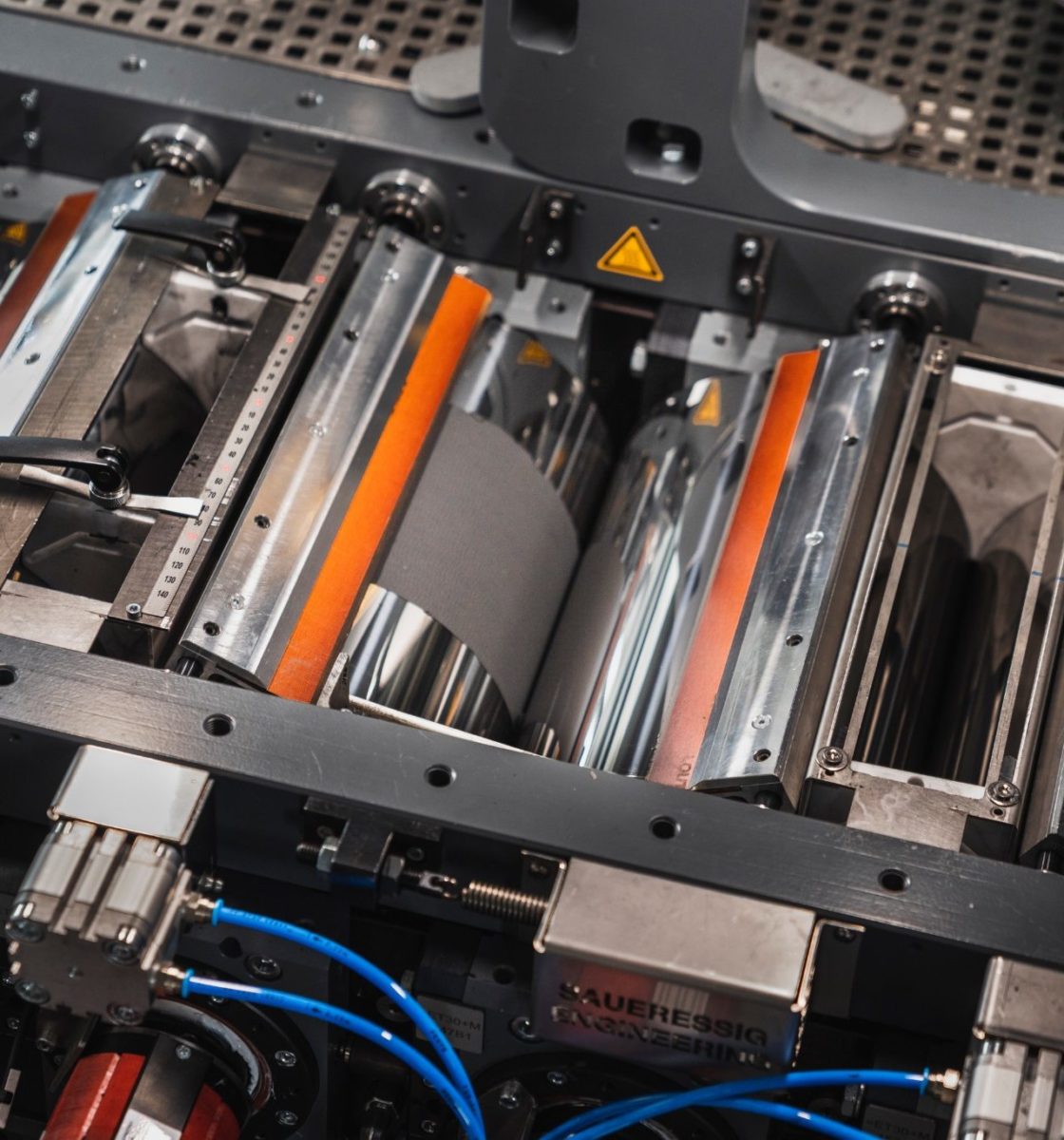From pv magazine International
To meet projections and targets for both renewable energy and electrification of transport set for the next decade, battery manufacturing will have to expand significantly. And though the batteries are needed to achieve decarbonization goals, the materials and processes used in battery manufacturing come with their own set of environmental concerns.
Battery electrodes are commonly manufactured using wet chemical processes requiring evaporation of toxic solvents, as well as drying at elevated temperatures requiring energy and space. The new process, developed by scientists at the Fraunhofer Institute for Material and Beam Technology (IWS), offers an alternative that promises to be solvent-free with considerably lower energy consumption.
Rotating rollers
The new process proposed by Fraunhofer IWS deposits a film of lithium (or another electrode material) between two and twenty microns thick onto a current collector. The raw materials are similar to those used in current large-scale battery manufacturing, though solvents are replaced with a binding agent.
The materials are fed as a dry mixture into a calender gap – two rollers rotating in opposite directions, one faster than the other. The force generated by this forms a fine film on the faster moving roller, and is transferred onto a current collector foil. This can then be coated with carbon to reduce resistance, cut to size and stacked with the other components to form a full battery cell.
The group estimates that its process would require just one-third the equipment of space of solvent-based processes, as well as moving the energy-intensive drying process from battery manufacturing. They have set up prototype machinery for the process, which it calls dry transfer electrode coating, or DRYtraec, and say they have demonstrated its applicability for large-scale production.
DRYtraec can also be applied to a range of different battery materials and chemistries. “The range of possible uses for the technology is not limited to a particular cell chemistry,” explains Benjamin Schumm, group manager for chemical coatings technology at Fraunhofer IWS. “It could equally be used on lithium-ion cells as on lithium-sulfur or sodium-ion cells.”
The group says it is in discussion with various automobile and battery manufacturers about establishing pilot systems to test and refine the process in an industrial setting. Schumm further notes that the process could also be suitable for use in manufacturing ‘next generation’ energy storage technologies, such as solid-state batteries. “These [solid state batteries] will be increasingly important in the future, but the materials cannot tolerate wet chemical processing,” he says. “Thus, DRYtraec allows to offer a very promising solution.”
This content is protected by copyright and may not be reused. If you want to cooperate with us and would like to reuse some of our content, please contact: editors@pv-magazine.com.









By submitting this form you agree to pv magazine using your data for the purposes of publishing your comment.
Your personal data will only be disclosed or otherwise transmitted to third parties for the purposes of spam filtering or if this is necessary for technical maintenance of the website. Any other transfer to third parties will not take place unless this is justified on the basis of applicable data protection regulations or if pv magazine is legally obliged to do so.
You may revoke this consent at any time with effect for the future, in which case your personal data will be deleted immediately. Otherwise, your data will be deleted if pv magazine has processed your request or the purpose of data storage is fulfilled.
Further information on data privacy can be found in our Data Protection Policy.